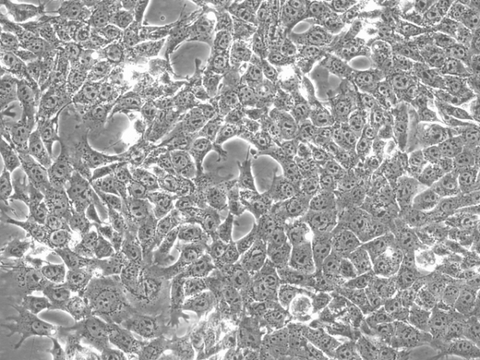4T1 Cells
Products
4T1-eGFP-Puro $ 1,500
4T1-Fluc-Neo $ 1,500
4T1-Fluc-Neo (monoclonal) $ 2,500
4T1-Fluc-Neo/eGFP-Puro $ 2,100
4T1-Fluc-Neo/iRFP-Puro $ 2,100
4T1-iRFP-Puro $ 1,500
4T1-mNIS(monoclonal) $ 2,500
4T1-mNIS-Neo/eGFP-Puro $ 2,100
4T1-mNIS-Neo/iRFP-Puro $ 2,100
4T1-mNIS-Puro $ 1,500
4T1-mNIS-Puro/Fluc-Neo $ 2,100


Description:
Usage Information:
4T1 cells are suitable for in vitro and in vivo experimentation. Both syngenic BALB/c mice and immunocompromised mice can be used for in life studies, and will form tumors and spontaneous metastases following implantation of the cells. Depending on the route of inoculation (see below), implanted 4T1 cells can metastasize to the lung, liver, lymph nodes, and brain, and micro-metastatic cells can be detected in many distant organs.
The following chart provides some examples of 4T1 cells used for tumor formation and studies.
|
Route of Implantation |
Mice |
Tumor/Metastases |
References |
|---|---|---|---|
|
Subcutaneous |
BALB/c |
Subcutaneous tumor, lung metastases |
Filatenkov et al. (2014) Radiation Res 182: 163-169. |
|
Intracardiac |
BALB/c |
Bone metastases |
Lee et al. (2014) Biochem Pharm 91: 51-60. Zhang et al. (2012) Cancer Gen Therapy 19:630-636. |
|
Orthotopic |
BALB/c |
Mammary tumor, Bone and lung metastases |
Michigami et al. (2002) Breast Cancer Res Treat 75: 249-258. |
|
Orthotopic |
Nude |
Mammary tumor, lung metastases |
Wang et al. (2014) Biomaterials 35: 8374-8384.
|
|
Subcutaneous (mammary gland) |
BALB/c |
Mammary tumor, lung, liver, lymph node, blood, and brain metastases |
Pulaski and Ostrand-Rosenberg (1998) Cancer Res 58:1486-1493. |
|
Tail vein |
BALB/c |
Lung metastases |
Thion et al. (2015) J National Cancer Institute 107 Jiang et al. (2014) Cancer Biol Ther 15: 789-796. |
Note: The above information is based on available data from the indicated references. It is not meant to be comprehensive and Imanis has not directly tested each condition.
Stable reporter cell lines:
Our 4T1 reporter cell lines can be tracked in vivo, making them great tools for studying the mechanisms of tumor growth and metastasis, as well as evaluating the effects of various drugs or therapies in animals. Our 4T1 cells are available with a variety of different reporters, including the murine sodium iodide symporter (mNIS), firefly luciferase (Fluc), enhanced green fluorescent protein (eGFP), or near-infrared fluorescent protein (iRFP). Several dual reporter 4T1 cell lines are available to facilitate multi-modality imaging.
In order to ensure high, constitutive expression of the reporter proteins, our cell lines are generated by lentivirus transduction. The lentivirus vectors used for these transductions are self-inactivating (SIN) vectors in which the viral enhancer and promoter has been deleted. This increases the biosafety of the lentiviruses by preventing mobilization of replication competent viruses (Miyoshi et al., J Virol. 1998).
For more information about a specific reporter and its uses, click on the photos below.





